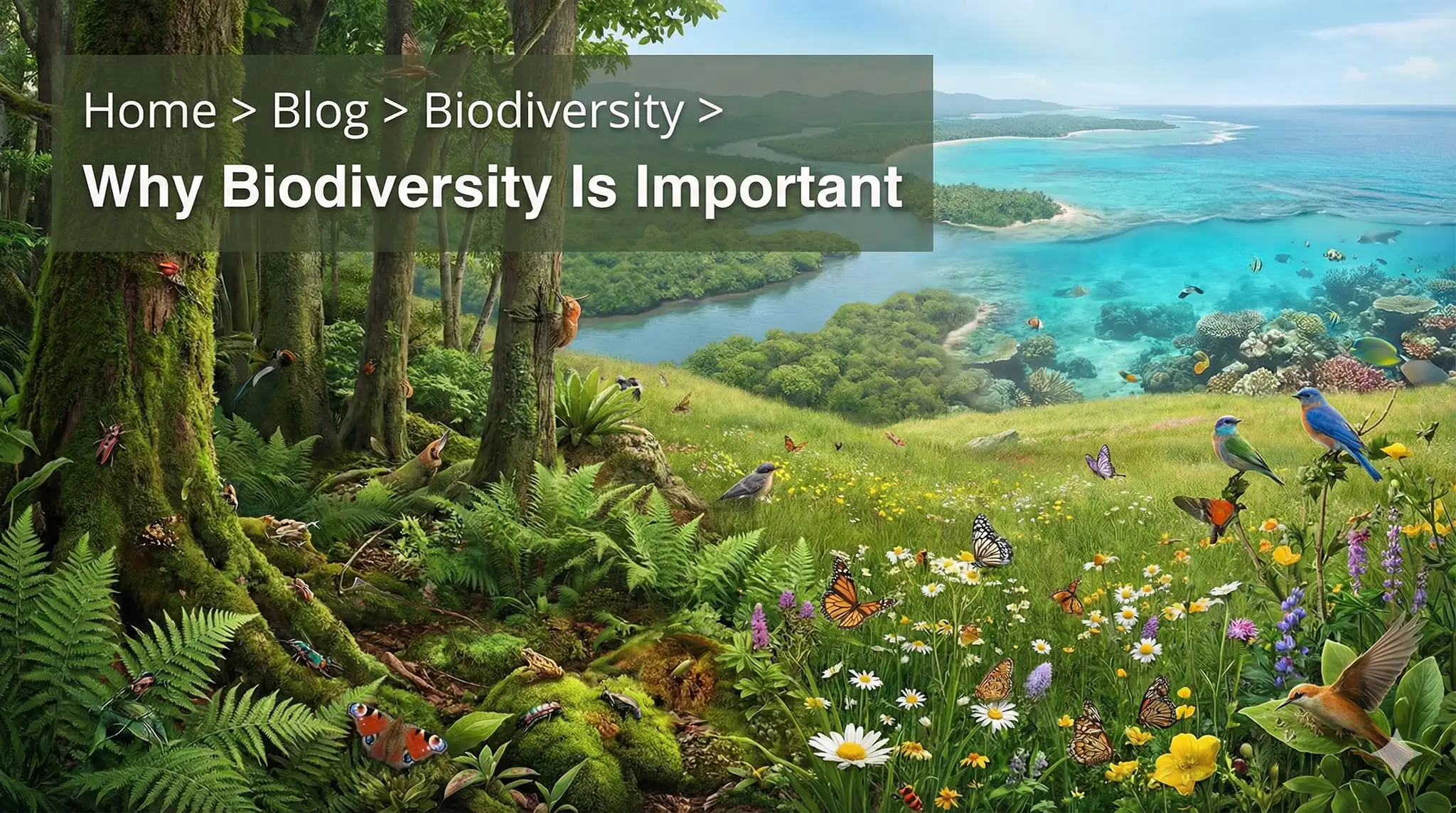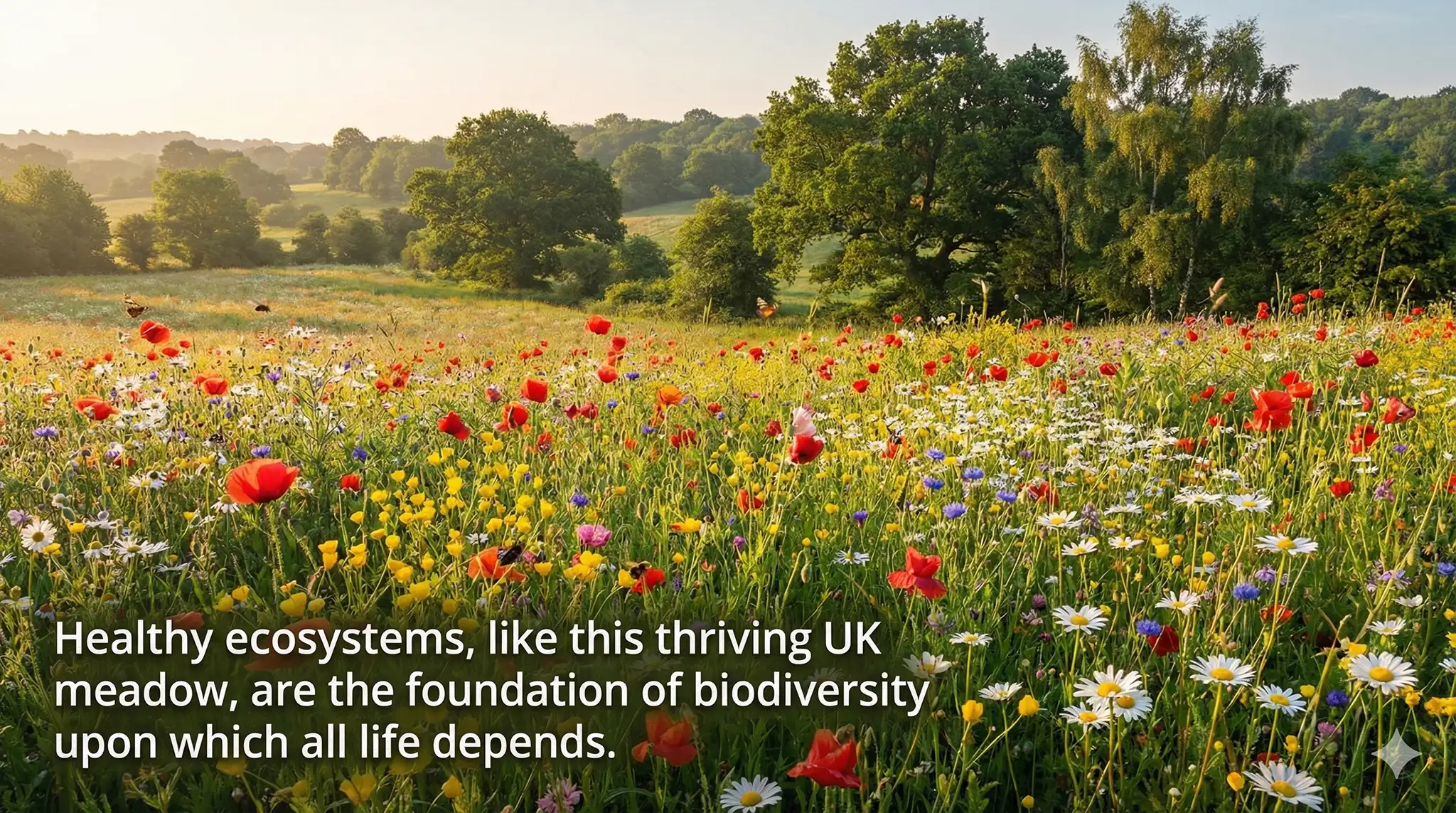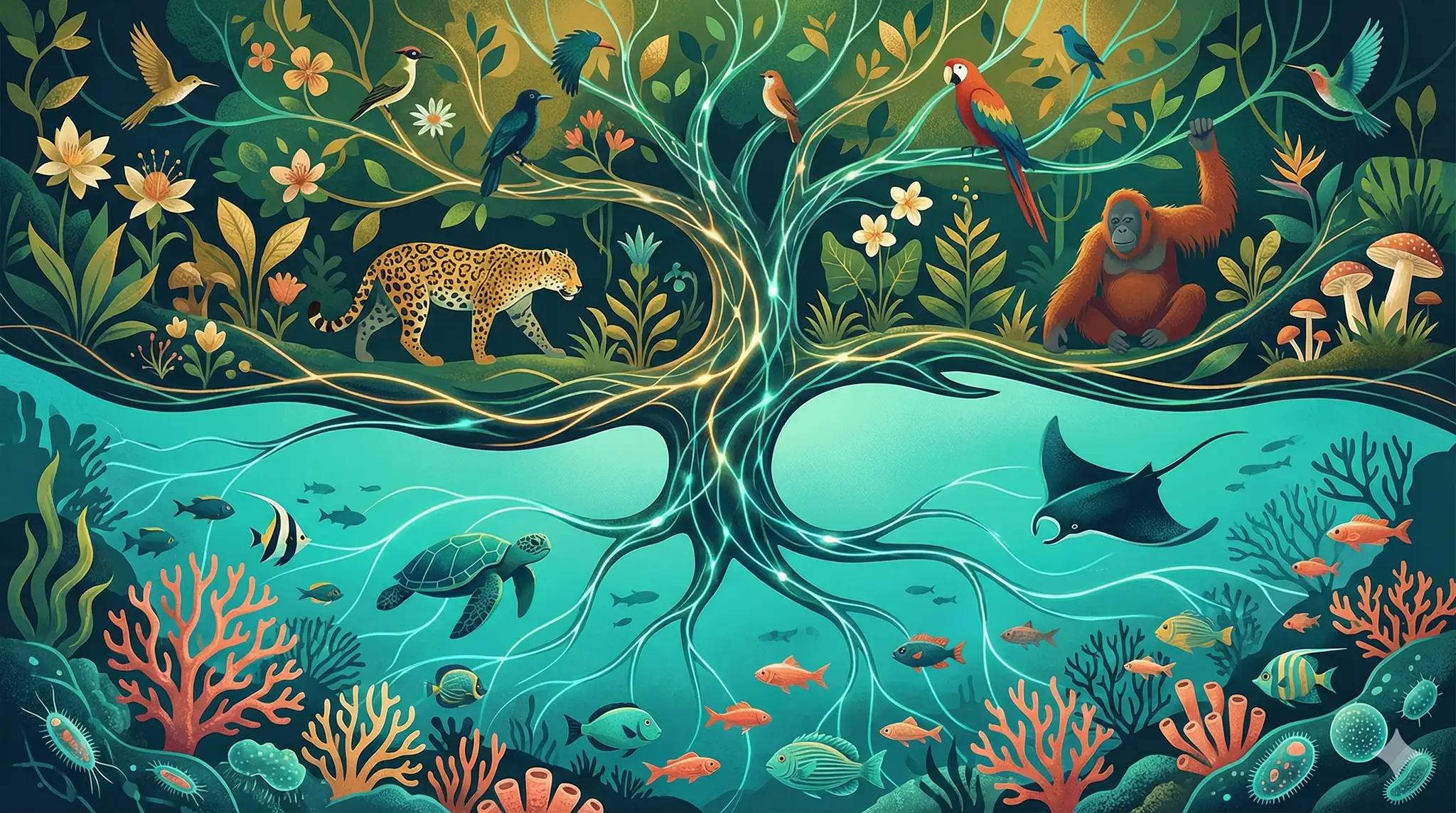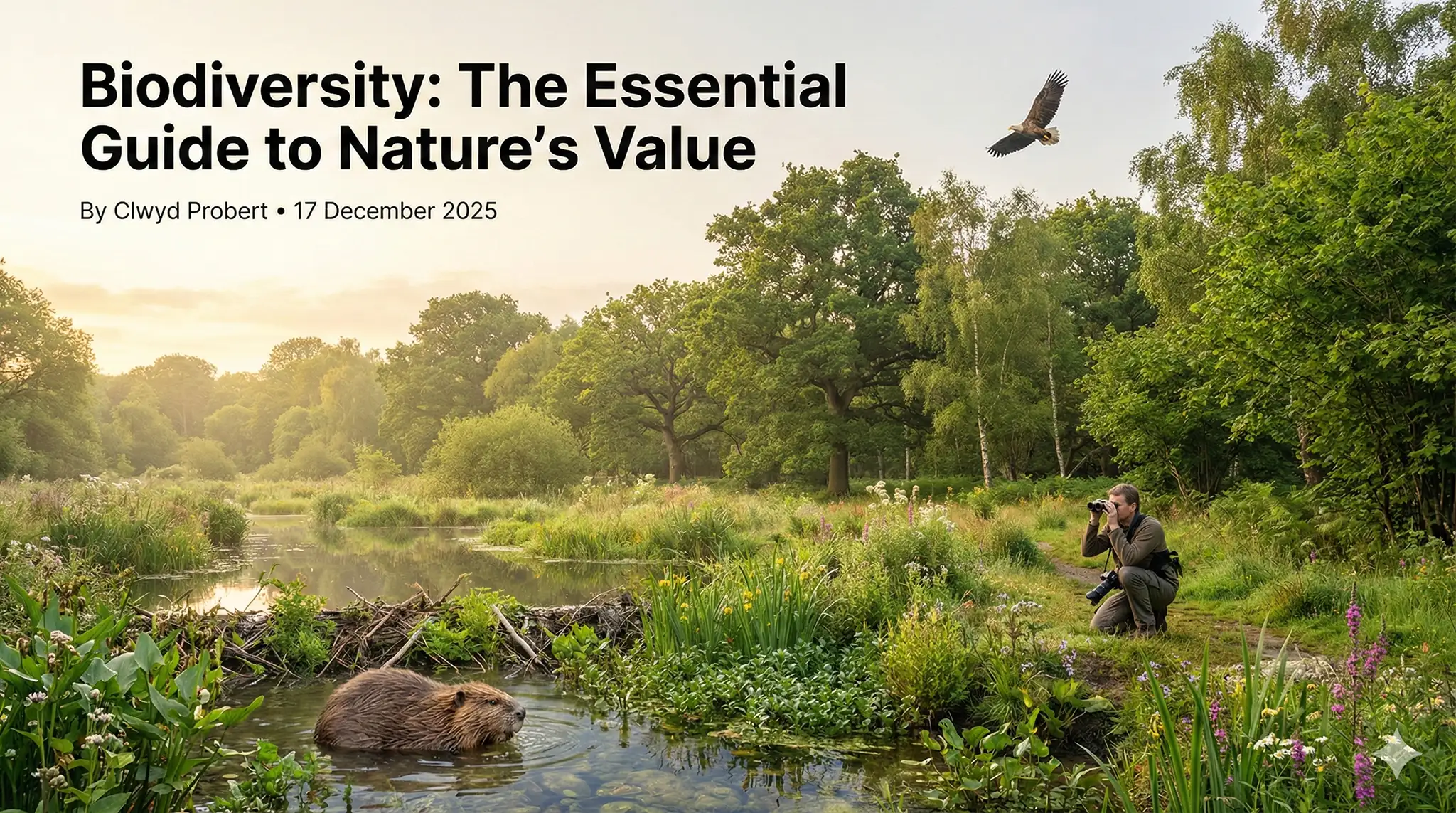Biodiversity refers to the variety of life on Earth, from genes to ecosystems. It includes all living organisms, such as plants, animals, fungi and microorganisms, and their interactions with each other and their environment. Biodiversity is essential for the survival and well-being of humans and all other species, as it provides us with many benefits and services.
What are the benefits of biodiversity?
Biodiversity has many values, both intrinsic and instrumental. Intrinsic value means that biodiversity has worth in itself, regardless of its usefulness to humans. Instrumental value means that biodiversity has worth because it serves some human purpose or needs. Some of the instrumental benefits of biodiversity are:
- Provisioning services: These are the products that we obtain from nature, such as food, fibre, fuel, medicine and genetic resources. Biodiversity provides us with a rich and diverse source of these goods, which are essential for our health, nutrition, livelihoods and culture.
- Regulating services: These are the functions that nature performs to regulate natural processes and cycles, such as climate regulation, water purification, pollination, pest control and disease prevention. Biodiversity helps to maintain these services by ensuring the stability and resilience of ecosystems.
- Supporting services: These are the underlying processes that enable other ecosystem services to exist, such as nutrient cycling, soil formation, primary production and habitat provision. Biodiversity supports these services by contributing to the structure and functioning of ecosystems.
- Cultural services: These are the non-material benefits that we derive from nature, such as aesthetic enjoyment, recreation, spiritual enrichment, education and inspiration. Biodiversity enhances these services by providing us with diverse and beautiful landscapes, wildlife and natural heritage.
What are the threats to biodiversity?
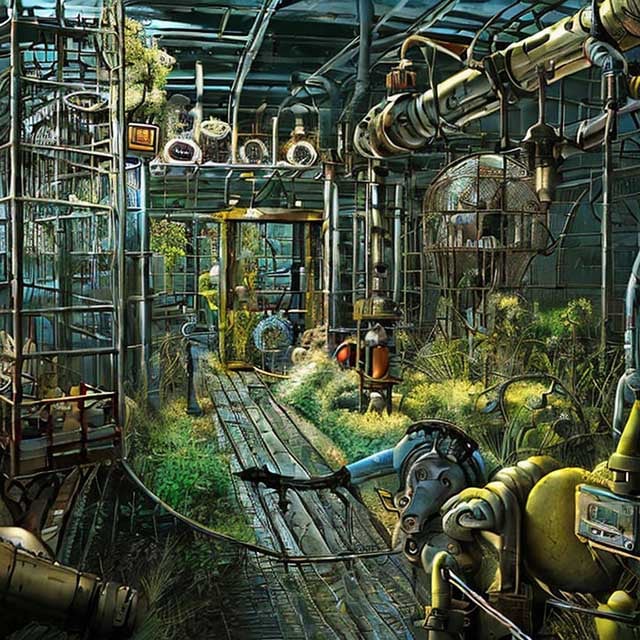 Unfortunately, biodiversity is under severe threat from human activities that degrade and destroy natural habitats, overexploit natural resources, introduce invasive species, and pollute and alter the climate. Some of the major threats to biodiversity are:
Unfortunately, biodiversity is under severe threat from human activities that degrade and destroy natural habitats, overexploit natural resources, introduce invasive species, and pollute and alter the climate. Some of the major threats to biodiversity are:
-
Habitat loss and fragmentation: This is the conversion or degradation of natural habitats into human-dominated landscapes, such as agriculture, urbanization, mining and infrastructure development. Habitat loss reduces the area and quality of living space for wildlife, leading to population declines, extinctions and loss of ecosystem functions. Habitat fragmentation breaks up large contiguous habitats into smaller isolated patches, making them more vulnerable to edge effects, invasion by exotic species and stochastic events.
-
Overexploitation: This is the unsustainable use of natural resources beyond their capacity to regenerate or recover, such as overfishing, overhunting, overgrazing and illegal wildlife trade. Overexploitation depletes populations of target species, affecting their genetic diversity, reproductive success and ecological roles. It also impacts non-target species through bycatch mortality or habitat degradation.
-
Invasive species: These are non-native species that have been introduced deliberately or accidentally into new areas where they have no natural predators or competitors, such as rats, rabbits, kudzu and zebra mussels. Invasive species can outcompete, prey on or hybridize with native species, altering ecosystem structure and function and reducing biodiversity.
-
Pollution: This is the release of harmful substances or energy into the environment, such as chemicals, plastics, nutrients, noise and light. Pollution can affect biodiversity by causing direct mortality, reducing growth and reproduction, inducing physiological stress or behavioural changes, disrupting food webs or altering habitats.
-
Climate change: This is the long-term change in global or regional climate patterns due to human-induced emissions of greenhouse gases, such as carbon dioxide, methane and nitrous oxide. Climate change can affect biodiversity by altering temperature, precipitation, seasonality and extreme events, affecting species distributions, phenology, interactions and adaptations.
How can we conserve biodiversity?
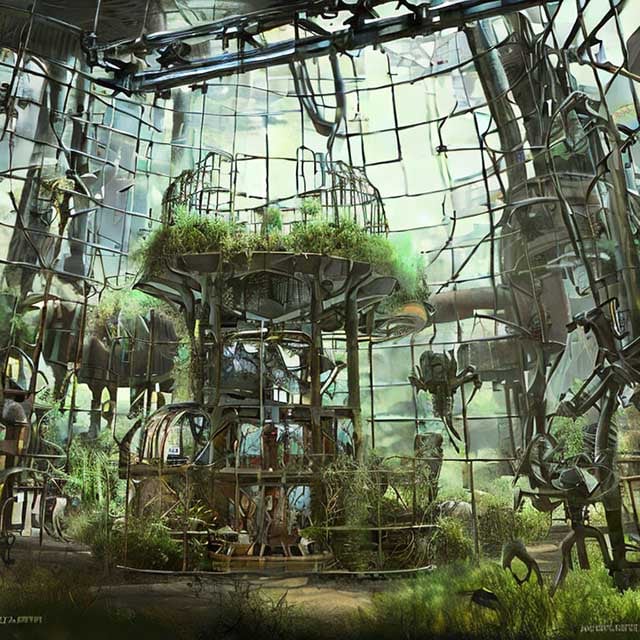 Conserving biodiversity is not only a moral duty but also a smart and necessary investment for our own survival and well-being. There are many actions that we can take at different levels to protect and restore biodiversity, such as:
Conserving biodiversity is not only a moral duty but also a smart and necessary investment for our own survival and well-being. There are many actions that we can take at different levels to protect and restore biodiversity, such as:
- At the global level: We can support international agreements and conventions that aim to conserve biodiversity and address its threats, such as the Convention on Biological Diversity (CBD), the Convention on International Trade in Endangered Species of Wild Fauna and Flora (CITES), the Ramsar Convention on Wetlands, and the United Nations Framework Convention on Climate Change (UNFCCC).
- At the national level: We can advocate for policies and laws that promote biodiversity conservation and sustainable use, such as creating protected areas, regulating land use and resource extraction, enforcing environmental standards, promoting green economy and incentives, and integrating biodiversity into sectoral planning and decision-making.
- At the local level: We can participate in community-based initiatives that involve local stakeholders in managing natural resources and ecosystems, such as community forests, co-management schemes, indigenous territories, ecotourism projects, citizen science programs, and education campaigns.
- At the individual level: We can adopt more environmentally friendly behaviours and lifestyles that reduce our ecological footprint and demand for natural resources, such as consuming less meat,
recycling more waste,
using renewable energy sources,
planting more trees,
supporting conservation organizations,
and spreading awareness about biodiversity issues.
FAQs on Why Is It Important to Conserve Biodiversity
Q: What is biodiversity?
A: Biodiversity refers to the variety of life on Earth, from genes to ecosystems. It includes all living organisms, such as plants, animals, fungi and microorganisms.
Q: Why is it important to conserve biodiversity?
A: Biodiversity is important to conserve because it provides us with many benefits and services that are essential for our survival and well-being. It also has intrinsic value that deserves respect and protection.
Q: What are some of the benefits of biodiversity?
A: Some of the benefits of biodiversity are provisioning services (products from nature), regulating services (functions that regulate natural processes), supporting services (processes that enable other services), and cultural services (non-material benefits from nature).
Q: What are some of the threats to biodiversity?
A: Some of the threats to biodiversity are habitat loss and fragmentation, overexploitation, invasive species, pollution and climate change. These human activities degrade and destroy natural habitats, overuse natural resources, introduce harmful species, release toxic substances and alter global or regional climate patterns. These threats reduce the area and quality of living space for wildlife, deplete populations of target and non-target species, alter ecosystem structure and function, affect species distributions, phenology, interactions and adaptations, and increase the risk of extinctions and loss of ecosystem services.
Conclusion: Why Is It Important to Conserve Biodiversity?
Biodiversity is the variety of life on Earth, and it is vital for our survival and well-being. It provides us with many benefits and services, such as food, medicine, climate regulation, recreation and inspiration. However, biodiversity is under severe threat from human activities that degrade and destroy natural habitats, overexploit natural resources, introduce invasive species, pollute and alter the climate. These threats have negative impacts on wildlife populations, ecosystems functions and human welfare. Therefore, we need to take urgent actions to conserve biodiversity at all levels, from global to individual. By protecting and restoring biodiversity, we can ensure a healthy and prosperous future for ourselves and all other species.
